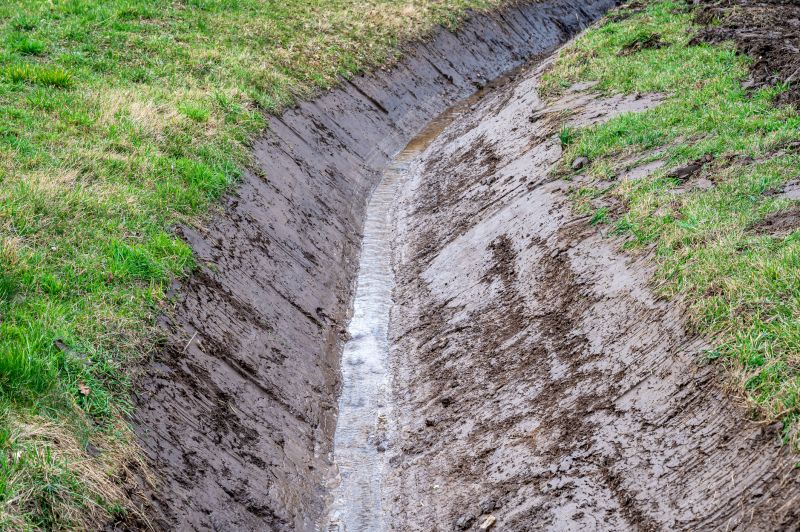Top Ditch Digging Service Equipment for Efficient Projects
Explore the leading tools and machinery that can streamline your ditch digging tasks and boost productivity on every job site.
 Ditch digging is a fundamental task in various construction, landscaping, and utility installation projects. Having the right tools and equipment can significantly improve efficiency and safety during these operations. From manual hand tools to powerful machinery, the range of products available caters to different project scales and user expertise. Selecting appropriate equipment depends on factors such as the size of the project, soil conditions, and budget considerations. Properly equipped, professionals and DIY enthusiasts alike can achieve cleaner, more precise trenches with less effort and time.
Ditch digging is a fundamental task in various construction, landscaping, and utility installation projects. Having the right tools and equipment can significantly improve efficiency and safety during these operations. From manual hand tools to powerful machinery, the range of products available caters to different project scales and user expertise. Selecting appropriate equipment depends on factors such as the size of the project, soil conditions, and budget considerations. Properly equipped, professionals and DIY enthusiasts alike can achieve cleaner, more precise trenches with less effort and time.
Top Overall Option
Versatile Power Trencher
A power trencher offers a balanced combination of efficiency, control, and adaptability for various ditch digging projects. It is suitable for medium to large-scale tasks, providing consistent trenching depth and width. Its adjustable features and multiple attachments allow users to tailor the equipment to specific project needs, making it a flexible choice for professionals and serious DIY enthusiasts.
Types of Products For Ditch Digging Service
Manual Shovels and Spades
Basic hand tools essential for small-scale or detailed ditch work, offering precision and control.
Post Hole Diggers
Tools designed for creating deep, narrow holes for posts or utility poles.
Mini Excavators
Compact machinery suitable for residential projects with versatile digging capabilities.
Trenchers
Power equipment that efficiently cuts trenches of various widths and depths for utility lines or drainage.
Vibratory Plows
Specialized machines for laying pipes and cables with minimal surface disruption.
Auger Attachments
Versatile attachments compatible with various machinery for drilling holes or narrow trenches.
Digging Buckets
Attachments for excavators that enhance digging capacity and efficiency.
Hand-Powered Augers
Manual tools for drilling small holes in tight spaces or limited access areas.
Utility Trowels
Smaller hand tools for finishing and refining trench edges.
Safety Gear
Protective equipment including gloves, helmets, and eyewear to ensure safe operation.
Maintenance Supplies
Lubricants, filters, and replacement parts to keep equipment in optimal condition.
Trenching Chains
Chains designed to attach to machinery for cutting trenches efficiently.
Drainage Pipe Installers
Specialized tools for laying and securing drainage pipes in trenches.
Soil Compactors
Equipment used to backfill and compact trenches after installation.
Laser Leveling Tools
Tools for ensuring accurate trench depth and alignment.
Extension Poles
Accessories that extend reach for manual digging or guiding machinery.
Hydraulic Breakers
Attachments for breaking hard ground or rocks during trenching.
Popular Choices
Ideal for small to medium projects, offering ease of use and portability.
A versatile machine suitable for residential and light commercial work.
Flexible option for larger projects without the need for ownership.
Popular for fence installation and small landscaping tasks.
Quiet and low-maintenance options for small digging jobs.
Widely used for manual trenching in various soil types.
Powerful options for extensive utility or drainage work.
Specialized equipment for laying underground cables efficiently.
A common choice for installing fences and signposts.
Used to secure backfilled trenches and prevent settling.
Add-ons for existing machinery to expand trenching capabilities.
Tools designed to streamline pipe installation in trenches.
Equipment that helps identify underground utilities before digging.
Essential protective equipment for trenching operations.
Equipment for efficient trench backfilling and leveling.
Tools for precise measurement of trench dimensions.
Necessary accessories for electric-powered trenching equipment.
Manual tools remain essential for small-scale or detailed work where precision is critical. Shovels, trenching spades, and hand augers are versatile options that allow for controlled digging in confined spaces or delicate areas. For larger projects, powered equipment such as mini excavators, trenchers, and vibratory plows can handle more extensive tasks efficiently. These machines vary in size, power, and functionality, making it possible to find equipment suitable for residential, commercial, or industrial applications. Safety features, ease of operation, and maintenance requirements are important factors to consider when choosing machinery.
In addition to digging tools, accessories and attachments like trenching chains, digging buckets, and auger bits expand the capabilities of core equipment, enabling users to customize their setup for specific tasks. Proper safety gear, including gloves, helmets, and protective eyewear, complements the use of these tools to ensure safe operation. Maintenance supplies such as lubricants, replacement blades, and filters help prolong the lifespan of machinery and maintain optimal performance. Whether undertaking a small backyard project or a large-scale utility installation, having the right combination of tools and safety equipment can make ditch digging more manageable and efficient.
Key Buying Considerations
- Project scale and trench dimensions to determine suitable equipment size.
- Soil type and ground hardness influencing the choice of manual versus powered tools.
- Ease of operation, especially if multiple users will operate the equipment.
- Power source availability, such as electric, gas, or hydraulic options.
- Mobility and maneuverability of machinery in confined or uneven spaces.
- Safety features and ergonomic design to reduce operator fatigue and risk.
- Attachments compatibility for expanding functionality and versatility.
- Maintenance requirements and availability of replacement parts.
- Budget constraints balancing upfront costs with long-term durability.
- Environmental conditions, including moisture levels and debris, affecting equipment choice.
- Regulatory compliance and safety standards for machinery and accessories.
- Storage and transportation considerations for larger equipment.
- User experience and training requirements for safe operation.
- Warranty and customer support offered by manufacturers or suppliers.
- Compatibility with existing tools or machinery on-site.
